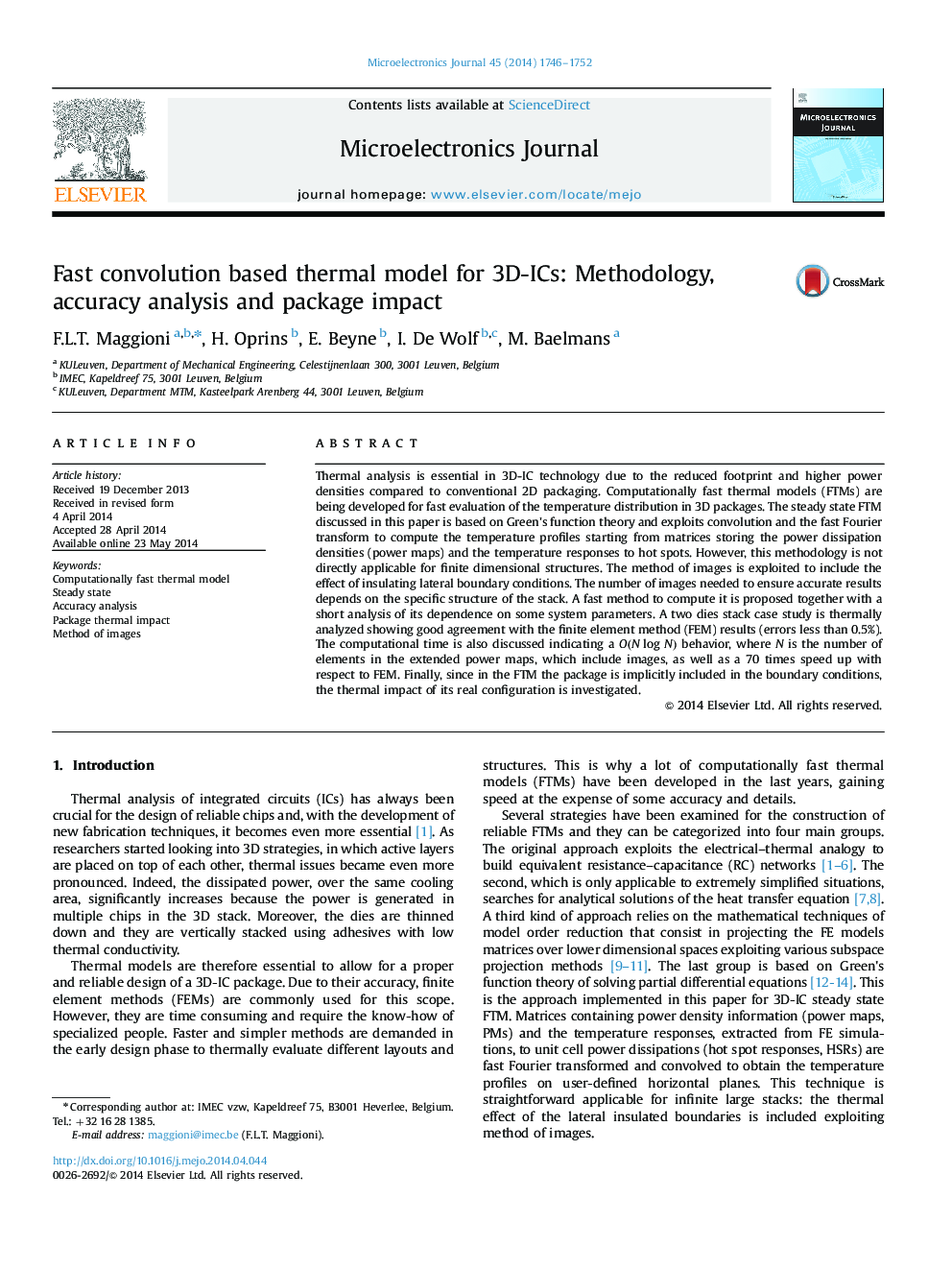| Article ID | Journal | Published Year | Pages | File Type |
|---|---|---|---|---|
| 543221 | Microelectronics Journal | 2014 | 7 Pages |
Thermal analysis is essential in 3D-IC technology due to the reduced footprint and higher power densities compared to conventional 2D packaging. Computationally fast thermal models (FTMs) are being developed for fast evaluation of the temperature distribution in 3D packages. The steady state FTM discussed in this paper is based on Green׳s function theory and exploits convolution and the fast Fourier transform to compute the temperature profiles starting from matrices storing the power dissipation densities (power maps) and the temperature responses to hot spots. However, this methodology is not directly applicable for finite dimensional structures. The method of images is exploited to include the effect of insulating lateral boundary conditions. The number of images needed to ensure accurate results depends on the specific structure of the stack. A fast method to compute it is proposed together with a short analysis of its dependence on some system parameters. A two dies stack case study is thermally analyzed showing good agreement with the finite element method (FEM) results (errors less than 0.5%). The computational time is also discussed indicating a O(NlogN) behavior, where N is the number of elements in the extended power maps, which include images, as well as a 70 times speed up with respect to FEM. Finally, since in the FTM the package is implicitly included in the boundary conditions, the thermal impact of its real configuration is investigated.
